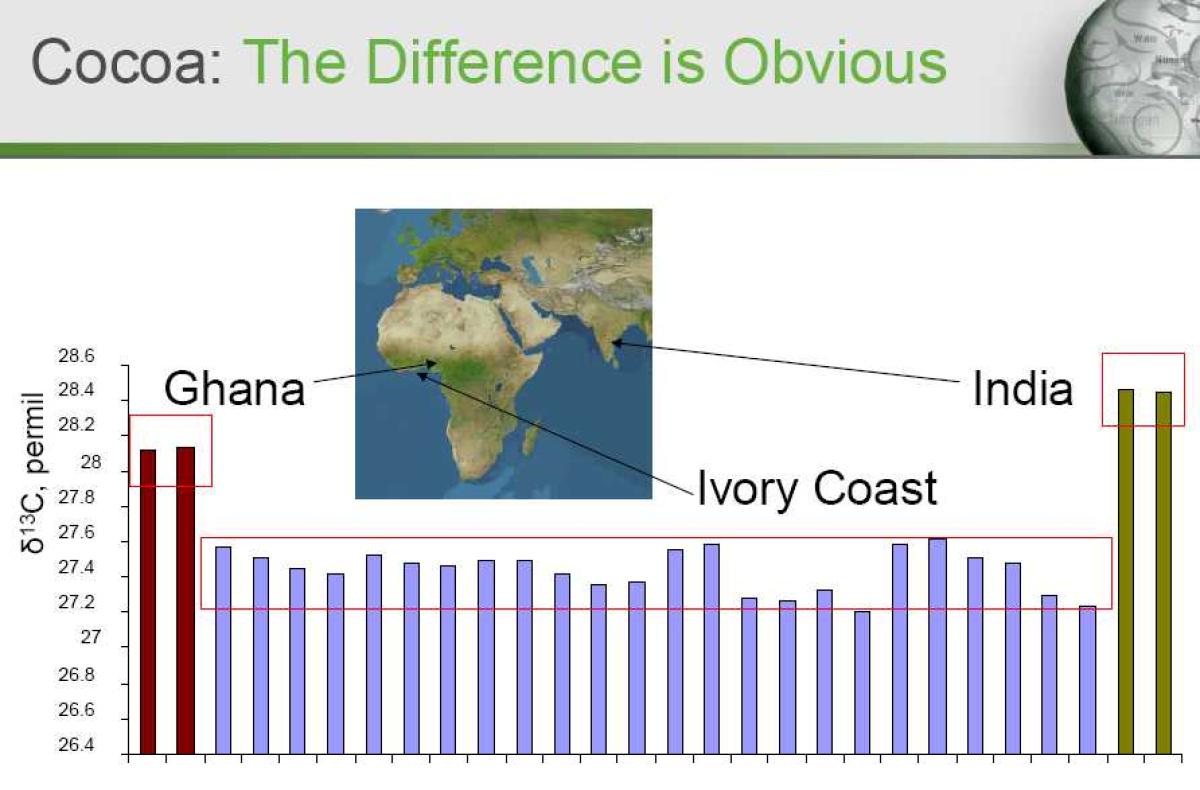Bravo to CNN for a thought provoking program on cocoa farm child labor in the Ivory Coast. The missing component from the discussion is that there is a solution that would go much further than the current crop of toothless fair trade ‘certifications’. Stable isotopes do a great job of distinguishing cocoa grown in different regions (see data inset). Companies and scientists can argue that the resolution isn’t down to the farm level, but as the cocoa becomes more homogenized by region, the resolution is perfect. That’s where testing is important, where smuggling can be stamped out and where Child Labor laws become enforceable.
Currently, if on-the-ground inspectors come across a farm that is employing child labor (as defined by the International Labor Organization or whatever version applies) there is very little actual consequence. The farmer’s crop is not allowed to be sold. That means nothing. Smuggling crops from one locale to another to be incorporated into aggregated shipments isn’t new. And, it’s certainly not new to cocoa or to the Ivory Coast, especially.
However, by fingerprinting the product coming from a local buyer of exporter, it becomes significantly riskier for that entity to incorporate a product of dubious provenance into their stock. The change in isotope values for all but the smallest and uneconomical smuggling operations would be noticed by the buyer with the risk that the contract be voided. And, with the current heightened awareness of using bad actors, there’s little chance another top food company is going to pick that contract up.
The on-the-ground inspectors would be tasked with mapping out the farm-to-local buyer chains (as is happening anyway) and they would be able to flag a local buyer that was buying from a child labor farm. And if stable isotope testing prevented that farm’s crop from reaching another buyer unnoticed, there is little else for that farmer to do but change.
As we’ve described, the tests are fast, quick and easy. You can run about 150 tests a day, so it would take a couple of weeks to a month for a company to map out its whole cocoa supply chain. You can a run a sample for about $1. Isn’t that a minor amount in the fight against child labor?
